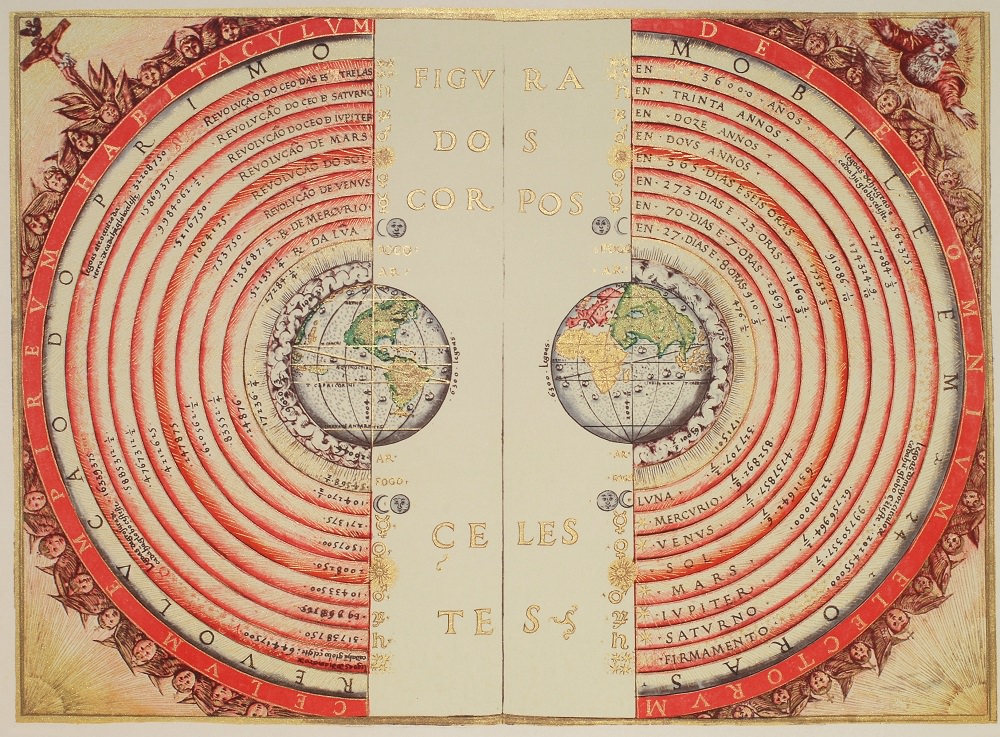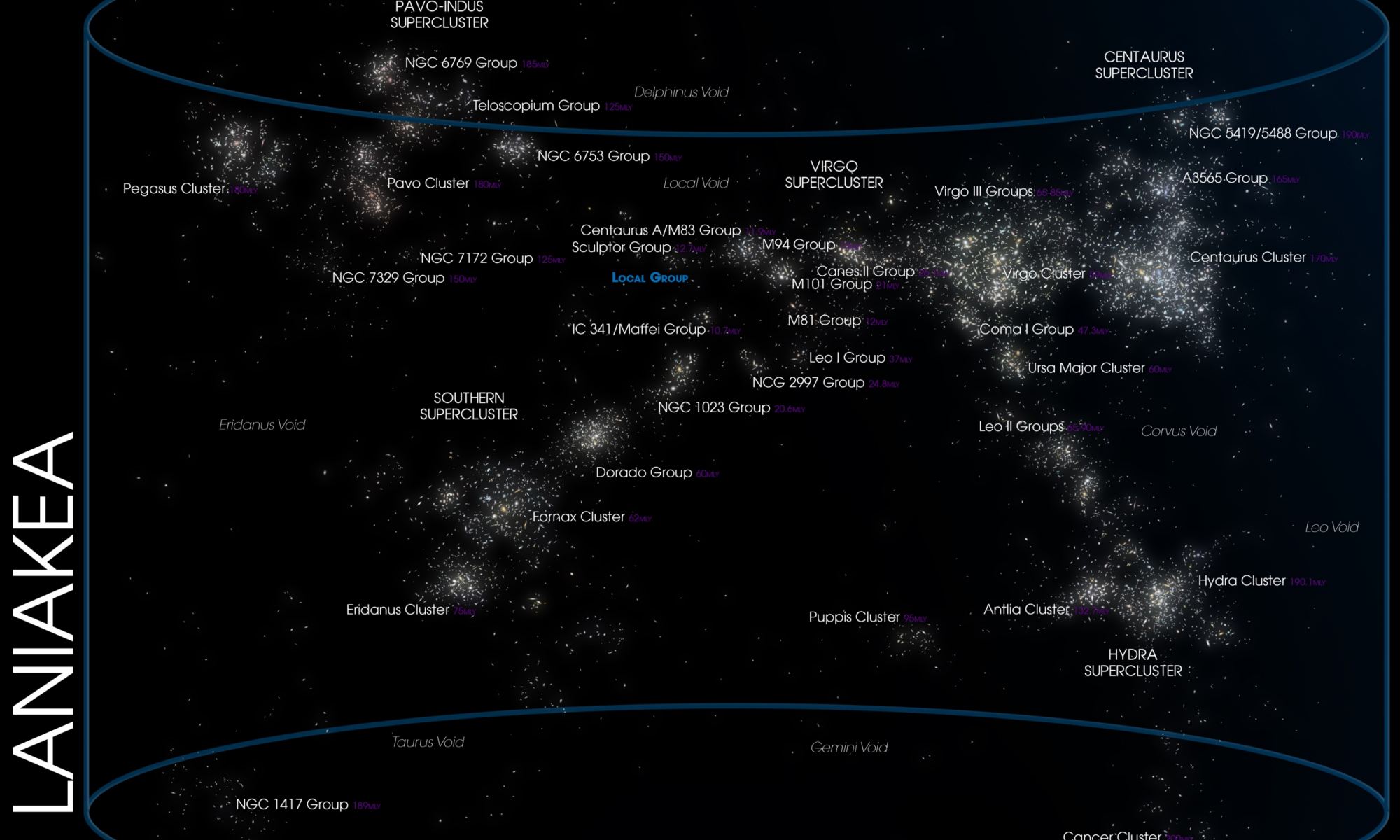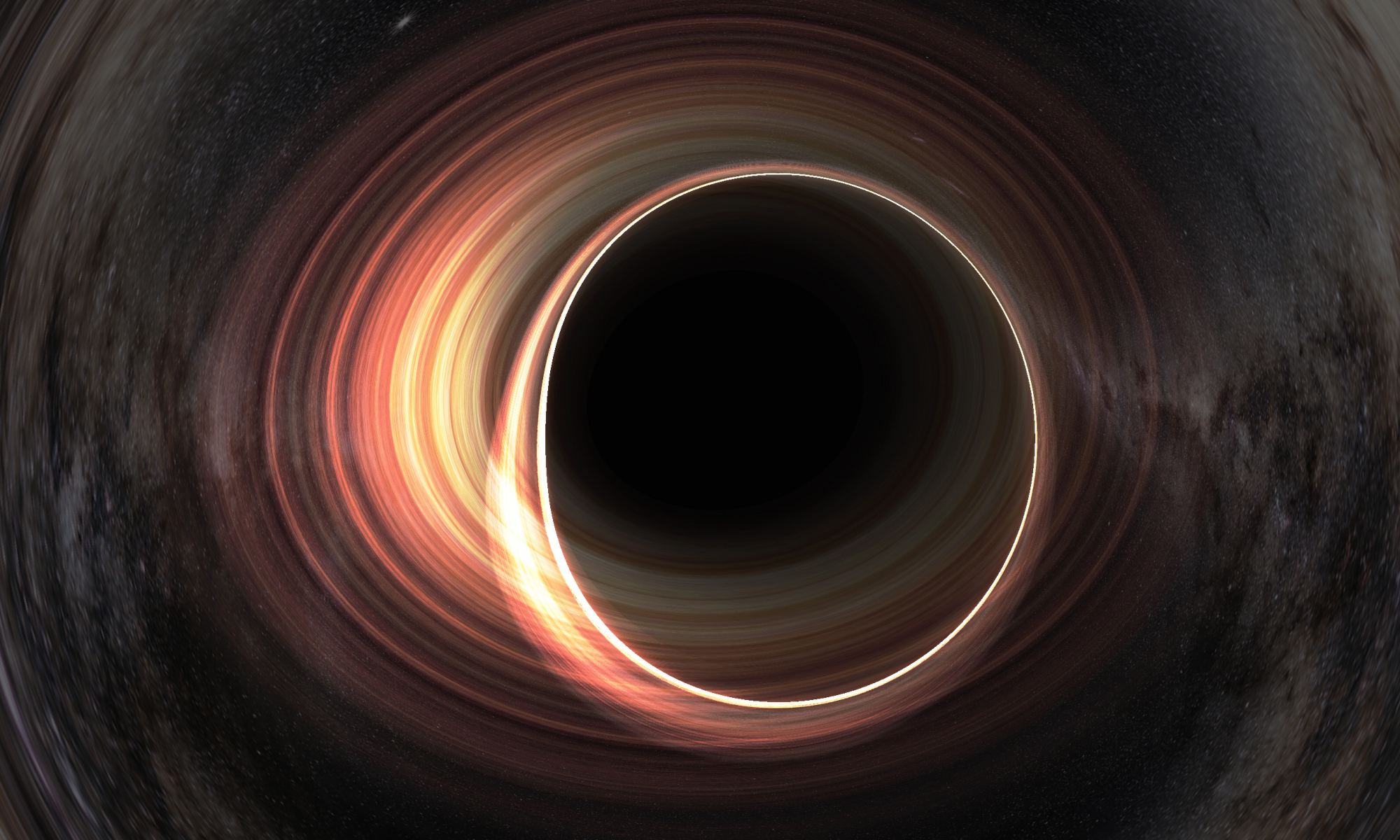Can a kilometer-scale telescope help conduct more efficient science, and specifically for the field of optical interferometry? This is what a recently submitted study hopes to address as a pair of researchers propose the Big Fringe Telescope (BFT), which is slated to comprise 16 telescopes 0.5-meter in diameter and will be equivalent to a telescope at 2.2 kilometers in diameter. What makes BFT unique is its potential to create real-time exoplanet “movies” like the movies featuring Venus transiting our Sun, along with significantly reduced construction costs compared to current ground-based optical interferometers.
Continue reading “The Big Fringe Telescope. A 2.2 KILOMETER Telescope on the Cheap. And it Can Make Exoplanet “Movies”.”What Makes a Supercluster?
By eye, it’s impossible to pick out the exact boundaries of the superclusters, which are among the largest structures in the universe. But that’s because they are not defined by their edges, but by the common motion of their components.
Continue reading “What Makes a Supercluster?”Neutron Star Mergers Could Be Producing Quark Matter

When neutron stars dance together, the grand smash finale they experience might create the densest known form of matter known in the Universe. It’s called “quark matter, ” a highly weird combo of liberated quarks and gluons. It’s unclear if the stuff existed in their cores before the end of their dance. However, in the wild aftermath a neutron-star merger, the strange conditions could free quarks and gluons from protons and neutrons. That lets them move around freely in the aftermath. So, researchers want to know how freely they move and what conditions might impede their motion (or flow).
Continue reading “Neutron Star Mergers Could Be Producing Quark Matter”Chinese Researchers Devise New Strategy for Producing Water on the Moon

In the coming years, China and Roscosmos plan to create the International Lunar Research PStation (ILRSP), a permanent base in the Moon’s southern polar region. Construction of the base will begin with the delivery of the first surface elements by 2030 and is expected to last until about 2040. This base will rival NASA’s Artemis Program, which will include the creation of the Lunar Gateway in orbit around the Moon and the various surface elements that make up the Artemis Base Camp. In addition to the cost of building these facilities, there are many considerable challenges that need to be addressed first.
Crews operating on the lunar surface for extended periods will require regular shipments of supplies. Unlike the International Space Station, which can be resupplied in a matter of hours, sending resupply spacecraft to the Moon will take about three days. As a result, NASA, China, and other space agencies are developing methods to harvest resources directly from the lunar environment – a process known as In-Situ Resource Utilization (ISRU). In a recent paper, a research team with the Chinese Academy of Sciences (CAS) announced a new method for producing massive amounts of water through a reaction between lunar regolith and endogenous hydrogen.
Continue reading “Chinese Researchers Devise New Strategy for Producing Water on the Moon”Is Science Slowing Down?

Paradoxically, even though we produce more scientific output than ever before – each year, researchers around the world publish millions of academic papers – the pace of scientific discovery is slowing down.
Continue reading “Is Science Slowing Down?”China Proposes Magnetic Launch System for Sending Resources Back to Earth
In his famous novel The Moon is a Harsh Mistress, Robert A. Heinlein describes a future lunar settlement where future lunar residents (“Loonies”) send payloads of wheat and water ice to Earth using an electromagnetic catapult. In this story, a group of Loonies conspire to take control of this catapult and threaten to “throw rocks at Earth” unless they recognize Luna as an independent world. Interestingly enough, scientists have explored this concept for decades as a means of transferring lunar resources to Earth someday.
Given that space agencies are planning on sending missions to the Moon to create permanent infrastructure, there is renewed interest in this concept. In a recent paper, a team of scientists from China’s Shanghai Institute of Satellite Engineering (SAST) detailed how a magnetic launcher on the lunar surface could provide a cost-effective means of sending resources back to Earth. This proposal could become part of China’s long-term vision for a lunar settlement known as the International Lunar Research Station (ILRS) – a joint project they are pursuing with the Russian space agency (Roscosmos).
Continue reading “China Proposes Magnetic Launch System for Sending Resources Back to Earth”The Universe is on the Move

Our universe is defined by the way it moves, and one way to describe the history of science is through our increasing awareness of the restlessness of the cosmos.
Continue reading “The Universe is on the Move”New Study Proposes how a Black Hole in Orbit Around a Planet Could be a Sign of an Advanced Civilization.
In 1971, English mathematical physicist and Nobel-prize winner Roger Penrose proposed how energy could be extracted from a rotating black hole. He argued that this could be done by building a harness around the black hole’s accretion disk, where infalling matter is accelerated to close to the speed of light, triggering the release of energy in multiple wavelengths. Since then, multiple researchers have suggested that advanced civilizations could use this method (the Penrose Process) to power their civilization and that this represents a technosignature we should be on the lookout for.
Examples include John M. Smart’s Transcension Hypothesis, a proposed resolution to the Fermi Paradox where he suggested advanced intelligence may migrate to the region surrounding black holes to take advantage of the energy available. The latest comes from Harvard Professor Avi Loeb, who proposed in a recent paper how advanced civilizations could rely on a “Black Hole Moon” to provide their home planet with power indefinitely. The way this black hole would illuminate the planet it orbits, he argues, would constitute a potential technosignature for future SETI surveys.
Continue reading “New Study Proposes how a Black Hole in Orbit Around a Planet Could be a Sign of an Advanced Civilization.”Comparing Two Proposed NASA Missions to Jupiter’s Moon Io

Thanks to NASA’s Juno mission to the Jupiter system, we’re getting our best looks ever at the gas giant’s volcanic moon Io. Even as Juno provides our best views of the moon, it also deepens our existing questions. Only a dedicated mission to Io can answer those questions, and there are two proposed missions.
Continue reading “Comparing Two Proposed NASA Missions to Jupiter’s Moon Io”Polaris, Earth’s North Star, Has A Surprisingly Spotted Surface

Humanity’s been fortunate to have a star situated over Earth’s north pole. The star, known as Polaris, or the North Star, has guided many sailors safely to port. But Polaris is a fascinating star in its own right, not just because of its serendipitous position.
Continue reading “Polaris, Earth’s North Star, Has A Surprisingly Spotted Surface”



